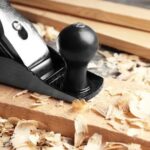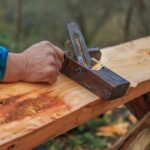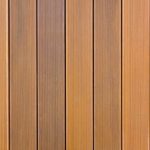When it comes to woodworking projects, the importance of strong and stylish table legs cannot be overstated. Tables serve as the centerpiece of any room, whether it’s a dining table, coffee table, or desk. They not only provide functionality but also add an aesthetic appeal to the space. In this article, we will explore the art of making table legs in woodworking and why they play a crucial role in enhancing the overall look and stability of your furniture.
In the first section, we will delve into understanding the different types of table legs. From traditional to contemporary designs, there are various styles and materials used in table leg construction. By exploring these options, you’ll have a better understanding of which style fits your specific project.
Next, we will guide you through choosing the right wood for your table legs. The wood species you choose can greatly impact the strength, durability, and visual appeal of your finished piece. We will provide a detailed guide on selecting the perfect wood that meets your requirements.
Additionally, we will discuss the essential tools and equipment needed for shaping and finishing table legs. From saws to chisels and sanders to stain brushes, having the right tools at hand is vital for achieving precise results. We will provide a comprehensive list along with tips on how to use them effectively.
By following this step-by-step guide on shaping table leg blanks using various woodworking techniques and exploring different joinery methods for attaching them securely, you’ll gain invaluable knowledge that can be applied not only to tables but other furniture projects as well.
In summary, this article aims to equip you with all the necessary information to create sturdy and stunning table legs for your woodworking projects. Whether you are a seasoned woodworker or just starting out, understanding the importance of strong and stylish table legs is vital in creating beautiful furniture pieces that stand the test of time.
Understanding the different types of table legs
Table legs play a critical role in the overall design and functionality of any woodworking project. They provide support and stability to the tabletop while also contributing to the aesthetic appeal of the piece. When it comes to table leg construction, there are various designs, styles, and materials to choose from. Understanding these options will help you select the perfect table legs for your project.
Designs: Table legs come in a variety of designs, each with its own unique look and feel. Some popular designs include tapered legs, turned legs, cabriole legs, and straight square legs. Tapered legs gradually decrease in width from top to bottom for a sleek and modern look.
Turned legs feature decorative patterns created by turning a lathe. Cabriole legs have an elegant S-shaped curve that adds a touch of sophistication to the piece. Straight square legs are simple yet sturdy and suit both contemporary and traditional styles.
Styles: In addition to different designs, table legs can also be classified into various styles based on their appearance and architectural influences. Some common styles include Queen Anne style with its graceful curves, Georgian style known for its simplicity and symmetry, Shaker style characterized by clean lines and functionality, and Arts and Crafts style featuring simple yet distinctive craftsmanship.
Materials: Table leg construction can involve different materials such as solid wood or metal. Solid wood is a popular choice due to its durability and natural beauty. Commonly used wood species include oak, maple, cherry, mahogany, walnut, and pine. Metal table legs offer a modern industrial appeal and can be made from steel or iron.
When choosing the right type of table leg for your woodworking project, consider factors such as the overall design theme of the piece, the desired level of durability, and the load-bearing capability required. By understanding the different designs, styles, and materials available, you can select table legs that not only provide the necessary support but also enhance the overall aesthetic appeal of your furniture.
Choosing the right wood for your table legs
Choosing the right wood for your table legs is essential to ensure the strength, durability, and aesthetic appeal of your woodworking project. There are various wood species available that offer different characteristics and qualities. By selecting the perfect wood species for your table legs, you can create a beautiful piece of furniture that will last for years to come.
When choosing the wood for your table legs, it is important to consider factors such as strength and durability. Hardwood species like oak, cherry, maple, and walnut are popular choices due to their natural strength and ability to withstand daily use. These woods have a tight grain structure which makes them less prone to warping or splitting over time.
In addition to strength and durability, aesthetic appeal is another crucial factor in selecting the right wood species for your table legs. Each wood species has its unique grain patterns, color variations, and textures that can add character and visual interest to your furniture piece. For example, oak is known for its prominent grain pattern, while cherry offers a rich reddish-brown color that deepens with age.
To help you make an informed decision, here is a list of some commonly used wood species for table leg construction:
- Oak: Known for its strength and distinctive grain patterns.
- Cherry: Offers a warm reddish-brown color that darkens with age.
- Maple: Has a light creamy color with minimal grain patterns.
- Walnut: Provides a dark brown color with intricate grain patterns.
Ultimately, the choice of wood species depends on your personal preference, the style of your project, and the overall design aesthetic you wish to achieve. Consider consulting with experts or visiting local woodworking stores to see samples of different wood species before making your final decision. By choosing the right wood for your table legs, you can ensure both functionality and beauty in your woodworking project.
Tools and equipment needed for table leg woodworking
Choosing the Right Tools
When it comes to woodworking, having the right tools is essential for achieving high-quality results. For table leg woodworking, there are several tools and equipment that you will need to shape and finish your table legs.
One of the most important tools is a reliable table saw. This will allow you to cut your wood accurately and precisely to the desired dimensions for your table legs. A miter saw or circular saw will also be useful for crosscutting and making angled cuts.
In addition to saws, you will also need a variety of hand planes or power planers for smoothing the surface of your table legs. A jointer can be used to straighten and square lumber, ensuring that your legs have clean and even edges. Other essential hand tools include chisels for precise shaping, a coping saw for curved cuts, and rasps and files for refining details.
Essential Clamps and Jigs
To hold your workpieces securely in place during shaping processes such as routing or sanding, clamps are indispensable. Bar clamps, pipe clamps, or parallel clamps can all be used effectively to secure your material while ensuring stability during shaping.
Jigs are also valuable tools that can assist in creating consistent shapes and angles. For example, a tapering jig can help you achieve tapered legs with precision. Additionally, drilling jigs can ensure accurate hole placement when attaching the table legs to the tabletop.
Sanding and Finishing Supplies
Once you have shaped your table leg blanks to their desired form, it’s time to sand and finish them for a smooth surface that enhances the natural beauty of the wood. Sandpaper of various grits – ranging from coarse grits for initial shaping to fine grits for final sanding – should be on hand.
To enhance the appearance of your finished legs, consider using wood stains or dyes to add color and depth. Additionally, sealants such as polyurethane or shellac can provide protection to the wood while bringing out its natural luster.
Step-by-step guide on shaping table leg blanks
Step-by-step guide on shaping table leg blanks: Detailed instructions on cutting, milling, and shaping the raw wood into table leg blanks using various woodworking techniques.
Once you have chosen the right wood species for your table legs, it’s time to shape the wood into table leg blanks. This process involves cutting, milling, and shaping the raw wood into the desired dimensions and profile for your table legs. Follow this step-by-step guide to learn how to shape your table leg blanks with precision and accuracy.
- Cutting the raw wood: Start by measuring and marking the desired length of your table legs on the raw wood. Use a miter saw or a circular saw equipped with a crosscutting blade to make clean and straight cuts. Take caution and ensure that your measurements are accurate before making any cuts.
- Milling the rough stock: Once the length of the table legs is determined, it’s time to mill the rough stock into square or rectangular sections. This can be done using a jointer and a thickness planer. Begin by flattening one face of each piece with a jointer, then use a planer to achieve consistent thickness across all sides.
- Shaping the table leg profile: Now that you have squared off pieces of wood, you can begin shaping them into the desired profile for your table legs. There are various woodworking techniques you can use depending on your design preferences such as turning on a lathe or using routers and chisels for more intricate designs.
Additionally, it is important to pay attention to safety measures while shaping your table leg blanks. Wear appropriate protective gear such as goggles, ear protection, and dust masks when operating power tools. Keep in mind that woodworking techniques may vary depending on the tools available to you and your level of expertise.
| Steps | Description |
|---|---|
| 1 | Cut the raw wood to the desired length using a miter saw or circular saw. |
| 2 | Milling – flatten one face of each piece with a jointer and achieve consistent thickness using a planer. |
| 3 | Shape the table leg profile using techniques such as turning on a lathe or using routers and chisels. |
By following these detailed instructions, you will be able to shape your table leg blanks accurately and efficiently. Once you have completed this step, you can proceed to joinery options for attaching the table legs securely to your tabletop.
Joinery options for attaching table legs
Introduction to Joinery Options
When it comes to attaching table legs, there are several joinery methods to consider. The choice of joinery can greatly impact the overall stability and strength of the table, as well as its aesthetic appeal. In this section, we will explore three popular joinery options: mortise and tenon, dowel, and pocket screws. Each method has its own advantages and considerations, so let’s dive in and learn more about them.
Mortise and Tenon Joinery
One of the oldest and most traditional joinery methods for attaching table legs is mortise and tenon. This technique involves creating a rectangular hole (mortise) in either the tabletop or leg, into which a corresponding protrusion (tenon) on the adjoining piece fits snugly. Mortise and tenon joints provide exceptional strength and durability while also adding an elegant touch to the overall design.
To create a mortise and tenon joint for your table legs, you will need specialized tools such as chisels or a router with a straight bit. The process involves carefully shaping the tenons on the leg ends and creating matching mortises on the tabletop. Once the pieces fit together seamlessly, they can be secured using glue or additional reinforcement methods like wooden pegs or wedges.
Dowel Joinery
Dowel joinery is another popular option for attaching table legs due to its simplicity and effectiveness. This method involves drilling holes into both the tabletop corners or aprons and the leg ends, then inserting wooden dowels into these holes to create a strong connection. Dowel joinery offers good stability while also being easy to disassemble if needed.
To use dowel joinery for your table legs, you will need a drill with appropriate drill bits for creating precise holes. It’s crucial to align the holes accurately to ensure a proper fit. Additionally, adding some glue to the dowels before inserting them into the holes will enhance the joint’s strength and stability.
Pocket Screw Joinery
Pocket screw joinery is a modern and efficient method for attaching table legs that provides excellent strength and reliability. This technique involves using a specialized jig to create angled pocket holes in the tabletop or aprons, which are then joined with screws to the leg ends. The screws are hidden inside the pocket holes, resulting in a clean and visually appealing finished look.
To use pocket screw joinery, you will need a pocket hole jig and compatible screws designed specifically for this method. The process typically requires precise measurements and careful drilling of pocket holes at appropriate angles to ensure proper alignment. Pocket screw joinery offers ease of assembly and disassembly, making it an attractive option for those who value versatility.
By exploring these different joinery methods – mortise and tenon, dowel, and pocket screws – you can choose the one that best suits your preferences in terms of strength, aesthetic appeal, and ease of construction. Each method has its own unique advantages and considerations, so it’s essential to carefully evaluate your project requirements before making a decision.
Design considerations for table leg stability and balance
One of the most important considerations when making table legs in woodworking is ensuring that they provide optimal stability and balance. A wobbly or unbalanced table can be frustrating and even dangerous, so it is essential to take design considerations into account. This section will provide tips and tricks for achieving stability and balance in table legs, taking into consideration factors such as height, width, and load-bearing capability.
Firstly, it is crucial to determine the appropriate height for your table legs. The height of the table should be comfortable for users, taking into account factors such as the average height of individuals who will be using the table. Generally, a standard dining table has legs that are around 28 to 30 inches tall, while a coffee table may have shorter legs averaging around 16 to 18 inches.
Next, consider the width of your table legs. Thicker legs tend to provide more stability than thinner ones. A wider leg base offers better support and reduces the risk of wobbling or tipping over. However, it is important to strike a balance between width and aesthetics to ensure that the legs complement the overall design of your table.
Load-bearing capability is another critical factor in designing stable table legs. Depending on the intended use of the table, it may need to support heavy items or withstand significant weight. Choose wood species that have high structural integrity and strength for load-bearing capabilities.
To summarize, achieving stability and balance in your table legs involves considering factors such as height, width, and load-bearing capability. By carefully designing your table leg dimensions with these considerations in mind, you can create sturdy and reliable pieces of furniture that will stand the test of time.
| Factors | Considerations |
|---|---|
| Height | Determine an appropriate height based on comfort for users. |
| Width | Balance aesthetics and stability, opting for wider legs for better support. |
| Load-bearing capability | Select wood species with high structural integrity and strength to withstand the intended weight or load. |
Finishing techniques for table legs
Finishing techniques play a crucial role in the overall look and durability of your table legs. While aesthetics are important, proper finishing also protects the wood from moisture, scratches, and other forms of damage. In this section, we will explore expert advice on sanding, staining, and sealing your table legs to achieve a professional finish that enhances the natural beauty of the wood.
The first step in finishing your table legs is sanding. Sandpaper with different grits should be used gradually to achieve a smooth surface. Start with a coarser grit to remove any rough spots or imperfections on the wood. As you progress through finer grits, focus on creating a uniform surface and removing any visible scratches left by the previous grits.
After sanding, you have the option to stain your table legs to enhance their color or match them with other elements in your furniture piece. Before applying stain, it is important to prepare the wood by using pre-stain conditioners or sealers.
These products help prevent uneven absorption of stain and create a more consistent coloration. When choosing a stain, consider testing it on a scrap piece of wood or an inconspicuous area of your table leg to ensure you achieve the desired result.
Once you have achieved your desired color or left the wood natural, it is time to seal your table legs. Sealing not only provides an added layer of protection but also enhances the appearance of the wood grain. There are various options for sealing including polyurethane, varnish, lacquer, or oil-based finishes. Each type has its own application process and drying time, so it is important to carefully read and follow the manufacturer’s instructions.
By following proper sanding techniques and selecting appropriate staining and sealing methods for your table legs, you can achieve a professional finish that brings out the natural beauty of the wood while providing long-lasting protection against wear and tear. Remember to take your time during each step of the finishing process to ensure exceptional results for your woodworking project.
Troubleshooting common table leg problems
Wobbling, uneven lengths, and splitting are common problems that can occur with table legs. These issues can not only affect the stability and functionality of the table but also detract from its overall aesthetic appeal. Fortunately, there are effective solutions to rectify these problems and ensure that your table legs are sturdy and visually pleasing.
One of the most common issues with table legs is wobbling. This can be caused by uneven length or an uneven surface on the bottom of the legs. To address this problem, start by measuring each leg carefully to ensure they are all the same length.
If there is any variation, use a saw or planer to trim them down to equal lengths. Additionally, make sure that the bottoms of the legs are flat and even. If necessary, sand or plane them until they are level.
Uneven lengths in table legs can create an unbalanced appearance and affect the stability of the table. To solve this problem, measure each leg carefully before cutting them to ensure they are all the same length. If you notice any discrepancies in length after cutting, use a saw or planer to trim them down accordingly.
Splitting is another common issue that can occur with table legs, especially if poor quality or improperly dried wood has been used. To prevent splitting, it’s important to choose high-quality wood species known for their durability and resistance to splitting, such as oak or maple. Additionally, make sure that the wood is properly kiln-dried before using it for your table legs.
If you do encounter splitting in your table legs, you can try applying wood glue or epoxy resin along the split and clamping it until dry. This should help secure the leg and prevent further splitting.
By addressing these common table leg problems and implementing the appropriate solutions, you can ensure that your woodworking project results in strong and stylish table legs that enhance the overall beauty and functionality of your furniture piece.
Conclusion
In conclusion, understanding how to make table legs is a vital skill for any woodworking project. Strong and stylish table legs are crucial for ensuring the stability and aesthetic appeal of furniture pieces. Throughout this article, we have explored various types of table legs, discussed the importance of choosing the right wood species, and provided a step-by-step guide on shaping table leg blanks.
One key takeaway from this article is the significance of selecting the appropriate wood for your table legs. The strength, durability, and visual appeal of the final product greatly depend on this choice. By considering factors such as load-bearing capacity and aesthetic preferences, you can ensure that your table legs not only provide stability but also enhance the overall look of your furniture piece.
Additionally, we have discussed various joinery options for attaching table legs to tabletops. From mortise and tenon joints to dowels and pocket screws, each method offers its own advantages in terms of strength and ease of assembly. By understanding these different joinery techniques, you can choose a method that best suits your woodworking skills and desired outcome.
By applying the tips and techniques outlined in this article, readers can confidently embark on their own table leg woodworking projects. From shaping table leg blanks to troubleshooting common issues like wobbling or splitting, you now have the knowledge necessary to create stunning furniture pieces that are both functional and visually appealing.
So roll up your sleeves, grab your tools, and let your creativity shine as you apply what you have learned about making table legs with style and precision. Happy woodworking.
Frequently Asked Questions
How do you make wooden legs for a table?
To make wooden legs for a table, you will need to start by selecting the type of wood you want to use. Once you have chosen your wood, you can measure and cut the pieces to the desired length for your table legs. It is important to ensure that each leg is cut at precisely the same length for balance and stability.
Next, you may choose to shape the legs using various tools such as a router or chisel, depending on your design preference. Sanding down the legs is recommended to smooth out any rough edges or imperfections. Finally, attach the legs securely to the table using screws or dowels, ensuring they are aligned properly.
Can you use 2×4 for table legs?
Yes, it is possible to use 2×4 lumber for table legs. However, there are a few considerations when using 2x4s as they are typically used for construction purposes rather than furniture making. One major consideration is aesthetics; 2x4s have a more rough and utilitarian appearance compared to traditional table leg options such as turned hardwood or metal legs.
Additionally, due to their larger size, 2x4s may not provide the most refined look and might be disproportionately heavy-looking compared to smaller tables. Despite these drawbacks, if rustic or industrial style fits your design concept or if you are working with limited resources or budget constraints, 2x4s can certainly be used effectively for table legs.
What is the best wood to make table legs out of?
The best wood for making table legs depends on several factors such as personal preference, budget considerations, and the desired style or aesthetic of the table being constructed. Some common choices include hardwoods like oak, maple, cherry, walnut, and mahogany due to their strength and durability characteristics. These woods also offer an attractive grain pattern that adds visual interest and refinement to table designs.
Another popular option is birch plywood which provides good stability while being cost-effective compared to solid hardwoods. Ultimately, choosing the best wood for table legs involves considering factors such as the desired look, budget, availability, and the specific needs of the table being constructed.

Hi everyone! I’m a woodworker and blogger, and this is my woodworking blog. In my blog, I share tips and tricks for woodworkers of all skill levels, as well as project ideas that you can try yourself.





